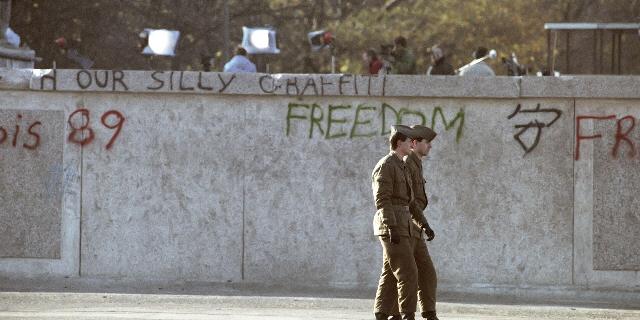Donald Trump's peace plan provides for the cession of territories from Ukraine, writes Focus-online. For Focus chief correspondent Ulrich Reitz, the parallels with divided Germany are obvious. But there are differences.
In terms of a seven-point peace agreement, US President Donald Trump proposes dividing Ukraine. According to this plan, Russia's annexation of Crimea will be legalized, and the occupied parts of eastern Ukraine will come under the de facto control of Russia.
Thus, Crimea and eastern Ukraine will have different status. Ulrich Reitz, Chief Correspondent of FOCUS-online, explains the need to distinguish between these two cases in his video column "Reitz's Theme".
Parallels with the division of Nazi Germany after World War II
"The de jure recognition of Crimea as Russian territory and the de facto recognition of parts of eastern Ukraine occupied by Russia is, in principle, a consolidation of the status quo on the battlefield. With this definition, a different status is established."
Thus, Crimea will be assigned to Russia "practically in accordance with the binding nature of international law," and the territories in eastern Ukraine will de facto, but not officially, belong to Russia.
Reitz sees obvious parallels with the divided Germany after World War II and refers to the historical difference between East and Central Germany.
Central Germany was the GDR. "Everything was very clear with the GDR. Even the German constitution stipulated that the German question remains open," says Reitz. Therefore, reunification has always been the stated goal in this case.
The German territories east of the Oder and Neisse borders, which came under Polish control after 1945, on the contrary, were considered East Germany. For decades, there has been a "serious dispute" about whether the Federal Republic of Germany should permanently abandon these territories.
Rayts: Ukraine will lose Crimea forever, territories in the east — not necessarily
"Willy Brandt was extremely mistaken when he said: "We respect the borders." The Union has always stressed that nothing is binding under international law." These territories were recognized as belonging to Poland in accordance with international law (de jure) only under the "Two plus Four" Treaty of 1990 as part of the reunification of Germany.
Regarding the possible situation in Ukraine, this means: "the mandatory nature of Crimea can be compared with that of the eastern territories of Germany. And the less mandatory nature of the territories in eastern Ukraine would be comparable to the status of the GDR," explains Rayts.
Accordingly, Ukraine would have lost Crimea forever, and the territories in the east of the country would have retained the chance of reunification with Ukraine. This could happen, if at all, only in 50 years.
Such negotiations could include many practical provisions similar to those that existed between East and West Germany.: "Travel agreements (only pensioners were allowed to travel), exchange issues, passport issuance. All of this can be the subject of negotiations between the two governments."
Mass flight is also possible: "there was a large flow of refugees between the GDR and West Germany. I can imagine that this will happen again."
First of all, this may be facilitated by the fact that the western, much larger part of Ukraine — as stated in the peace plan — will become a member of the European Union, even if it does not join NATO.
Differences from the GDR scenario
Despite all the territorial losses, the potential implementation of Trump's peace plan would not be tantamount to Ukraine's surrender, continues Rayts. After all, Russia would not have achieved its main military objectives.
"Ukraine would have remained a sovereign state, just as the Federal Republic of Germany remained a sovereign state after reunification."
Despite the obvious parallels with German history, there are fundamental differences between the past and the present.
"Germany was a criminal back then, but Ukraine is a victim today. This is the first big difference. Secondly, Germany has already surrendered, has been occupied by the four victorious powers, and Ukraine is still in a state of hostilities. That's where the analogies end. To some extent, history repeats itself. But to a large extent, no."

